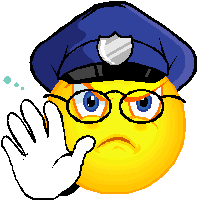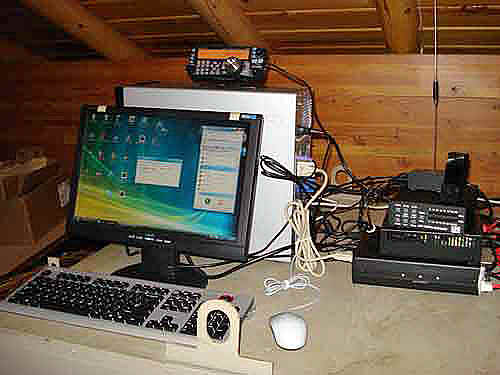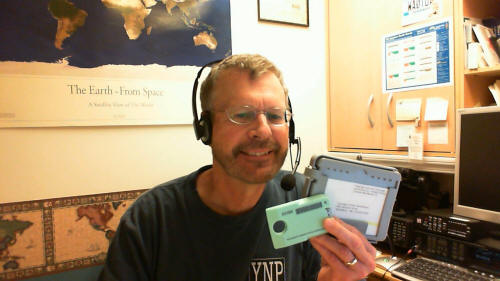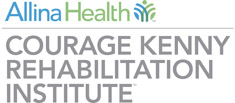
Courage Kenny Rehabilitation Institute Handiham World Weekly E-Letter for the week of Wednesday,
11 June 2014
Get this podcast in iTunes:
RSS feed for the audio podcast if you use other podcasting software:
http://feeds.feedBurner.com/handiham
Welcome to Handiham World.
Picking a DAISY
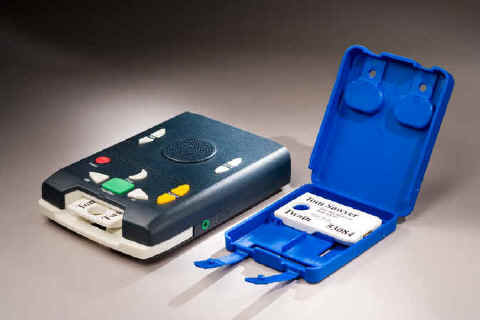 Photo: The NLS DAISY player and cartridge with mailer.
Photo: The NLS DAISY player and cartridge with mailer.
No, we are not picking flowers. DAISY refers to "Digital
Accessible Information SYstem",
the worldwide standard for accessible talking books.
The current National Library Service (NLS) player has
reached about as close to 100% penetration in the United States as it's going
to, and the few remaining 4-track cassette tape players are no longer actively
supported. I have to admit that I don't miss a lot of stuff about the old
tape system: The tangled or broken tapes, the shoebox full of cassettes
for really long books, the way the tapes would get out of order and mess up your
reading, the hassle with the high-speed duplicating machines that took lots of
TLC to keep them running, and of course the way it was darned near impossible to
find your place in a long tape book if you wanted to go back and check out a
specific reference.
DAISY takes care of that stuff nicely. With no moving
parts in a DAISY digital cartridge, there is no tape to stretch, break, or wrap
itself around a capstan. A single cartridge can hold many books, so you can
safely throw those old shoeboxes in the recycling bin. And of course it's easy
to locate specific parts of a book using the NLS player's talking navigation
system.
So what's not to like?
Well, the truth of the matter is that every technology
comes with its problems. The well-understood analog cassette tape system
had lots of mechanical failure points, both in recording and playback. If a tape
broke, it was pretty obvious. The same was true if a tape ran short and
some of the material was missed. Diagnosis of problems was
straightforward.
But DAISY is different. It's much more complex, depending
on firmware - computer code - to control the NLS player functions. The
cartridges contain digitally-produced books. How many thousands and
thousands of lines of computer code must execute perfectly to make the sound
come out of the speaker? Plenty, that's how many! And
the thing with DAISY digital talking book audio is that for all its complexity,
it is highly reliable - but like other digital media, it generally either works
perfectly or it does not work at all. There is not a lot of in-between
with digital!
When we decided to finally take the plunge into DAISY with
all of our Handiham audio, it was only the beginning of a long process.
Even though we've had several years of DAISY production experience, there are
still audio files that remain unconverted to the new format. Partly it is
a matter of time and whether or not the files are readily available to our
members in another format. MP3 audio, for example, is perfectly fine in
most circumstances. DAISY players can play it, and there may not even be
any real advantage in doing a conversion. On the other hand, I've learned
a lot about audio production over the years and by placing myself into the role
of a consumer of audio rather than only a producer, I've gotten some insight as
to what could be done better. There are two ways I've done this kind of
learning:
-
Listening to what our members tell me, and...
-
Using our own website long after I've posted the audio,
only to find out that the way I arranged it or described what it's about is
confusing!
The first method is essential since I don't have an NLS
player myself and have to learn from actual users about their experience with
our Handiham DAISY books. The second is both amusing and a bit humbling
since it reveals that at some point in the past I laid something out on the
website that was complicated and confusing or just plain wrong. In any
case, corrections must be made.
Often I find out about problems from users. That has
been the case lately when a number of NLS cartridge users have reported missing
books or cartridge errors. Now, this is where the digital system has its
weak point: brittleness due to its complexity. A problem shows up, and not
everyone reports the same result, but I know something must be up. Where
to look? Software? Hardware? User error? Production error?
With a cassette tape that failed, it was usually obvious
what had happened. Pretty much anyone could tell when the tape tangled up
or broke. This is not the case with digital. It could be any of many
things, and because it's complex, the cause is usually not obvious.

Photo: Yes, I'm smiling while looking at this NLS cartridge. Nothing
in the way it looks can tell me a thing about what's wrong inside, though.
The detective work begins.
Okay, so here is what I knew:
-
Some users reported "cartridge errors".
-
Some users could read all books up to a certain book,
but then couldn't read further.
-
Most times there were no reports of problems at all.
-
The June 2014 DAISY digest produced more error reports
than others. One user reported that QST was "blank".
The possibilities I had to consider were defective
hardware, user error, or production problems. I know that the NLS players
can sometimes return cartridge errors for a variety of reasons, including user
errors or incompatible USB memory. I found these things out by researching
on the web. User error seemed unlikely when it was happening to multiple
users, since after all the players are designed to be easy to use in the first
place and most of our Handiham members are smarter than the average user about
technology. Incompatibility didn't seem likely because we are talking
about NLS cartridges here, not just any old USB sticks. It would be
inconceivable that a vendor of NLS cartridges would choose incompatible USB
memory to use in the NLS cartridge format. Of course hardware can fail and
become incompatible, but since solid-state memory has no moving parts, it is
generally quite reliable and the odds of multiple failures in the same month
seem vanishingly tiny.
That left production problems, and I'd been suspicious
about this as a possible cause for several months when unexplained errors
cropped up. But what could be the cause? Was it my production tool,
Obi? Was it the DAISY format I chose? What else could it possibly
be? I had tested all of the books in AMIS, the open-source DAISY reader
for Windows, and everything worked fine. It was a real "head-scratcher"!
A break came when I decided to try producing DAISY 2.02
format books instead of DAISY 3.0 using Obi. My thinking was that maybe
the 3.0 format was not compatible with the firmware version of some of the NLS
players. (See how complicated this gets?) But when the June digest
went out, the error messages still appeared. It wasn't the DAISY version, so I
had to continue looking. When one of the users reported that QST was
"blank", I decided to examine the DAISY files for that book. Another
member had told me his cartridge didn't work and he'd returned it promptly, so I
took a look at the files on it. The file structure looked good and the
cartridge was totally readable in Windows Explorer. AMIS played the files
without a hitch. Even the QST digest files played fine, but then I got a
hunch:
What about the file names?
Somewhere in my research I'd recalled reading about
filename compatibility. I had not, in spite of many searches, been able to
locate a specific file naming standard, though. But one thing for sure
about the directories containing the defective books was that they all seemed to
have at least one really long file name. Perhaps the problem lay in the
long file names, which somehow could not be handled by the NLS player but which
might be handled by other hardware or software. Or maybe there were "illegal"
characters in the filenames that halted playback. I was reading on the
Daisypedia website and found an article about using the DAISY Pipeline.
A function available in the Pipeline is "Fileset Renamer", which turned out to
be a feature that could rename the files in a DAISY book to assure that there
were no illegal characters and - get this - limit the filename to 60
characters!
Bingo. That might just be the problem. It is
difficult to estimate filename lengths by eyeballing them in a Windows
directory, so I got my reading glasses and a scrap of paper with a straight edge
so that I could count off the filename characters in the longest file character
by character. Sure enough, I got to 60 and there were still 20 plus to go.
So some of the filenames were too long. My next step is to
shorten them up and resend the cartridge to a couple of users for confirmation
that the files are readable. If the filenames did indeed cause the
problem, we will know better next time and produce a more reliable DAISY digest.
What's the takeaway from this?
For me, it really brings home the downside of complex
systems. They may be necessary to do what we demand of our technology
today, but when things go awry finding the problem can be one of those "needle
in the haystack" deals. A big thank you to WA0CAF for helping me
diagnose the problem!
For Handiham World, I'm...
Patrick Tice, WA0TDA
Courage Kenny Handiham Coordinator
Bulletins
July QST is out:
The July 2014 QST, the ARRL Centennial Issue, has been published on line for ARRL
members. Information on QST and ARRL membership is at:
http://www.arrl.org/qst
ARRL: FCC Okays Changes to Amateur Radio Exam
Credit, Test Administration, Emission Type Rules
In a wide-ranging Report and Order (R&O) released June 9
that takes various proceedings into consideration, the FCC has revised the
Amateur Service Part 97 rules to grant credit for written examination elements 3
(General) and 4 (Amateur Extra) to holders of "expired licenses that required
passage of those elements." The FCC will require former licensees - those
falling outside the 2-year grace period - to pass Element 2 (Technician) in
order to be relicensed, however. The Commission declined to give examination
credit to the holder of an expired Certificate of Successful Completion of
Examination (CSCE) or to extend its validity to the holder's lifetime. The
Report and Order may be found on the web in PDF format at,
http://transition.fcc.gov/Daily_Releases/Daily_Business/2014/db0609/FCC-14-74A1.pdf
NASA Science News for June 10, 2014 - NASA and NOAA agree:
Solar Max has arrived, but this "mini Max" is not like any other solar maximum
of the Space Age.
2014 Radio Camp (Saturday, August 16 through Saturday August 23, 2014)
The
Equipment Program will be at Radio Camp. Campers will be able to take
home equipment, provided that the Equipment Program has it available.
Campers should let us know what they need to get on the air. Categories
of equipment that can be made available for you to take home from camp
are:
Morse Code training compact discs
VHF/UHF radios
HF radios
Accessories like speakers and tuners
Morse code accessories
Other accessories - Please let me know what you need.
A dip in the pool
It's time for a dip in the Extra Class pool.
E6A17 asks, "What are the names of the three terminals of a field-effect
transistor?"
Possible answers are:
A. Gate 1, gate 2, drain
B. Emitter, base, collector
C. Emitter, base 1, base 2
D. Gate, drain, source
This is one of those questions that offers a bit of a
teaching moment. The traditional bipolar transistor's three terminals are
emitter, base, collector. When the base-emitter junction is forward-biased,
collector current will be larger than current through the base, and you can make
the larger collector current flow in proportion to the smaller current flow on
the base. signal in = big signal out! The FET, or field-effect transistor,
is a bit different. Its terminals are called gate, drain, and source - so
answer D is the correct one. Instead of being controlled by current, a
"field effect" of voltage controls the device. Charge carriers enter
through the source and leave through the drain. In between, they are
controlled by a resistance that depends on the charge of the gate. Thus,
you can put a signal (voltage) on the gate and have it control the flow of
electrons through the device. A FET has a high input impedance compared to
a traditional bipolar transistor.
Traveling by air? How does cabin air pressure in flight
compare to being at different ground elevations?
Recently I spoke with another ham radio operator who
occasionally used supplemental oxygen because of a health condition. We
were both wondering what the equivalent cabin pressure in a jetliner might be
when flying at altitude since this could make less oxygen available in the
reduced pressure of the cabin during a long flight. I found the World
Health Organization website resource that answers this very question. It
is at:
http://www.who.int/ith/mode_of_travel/cab/en/
Of course you should always check with your doctor for
advice if you do plan to travel and use oxygen.
Practical Radio
Morse code? Maybe it's time.
"UR RST 579 IN TX".
That's what I copied right off the bat after tuning from the nearly-dead phone
portion of the 20 meter band down to the relatively active CW portion.
That particular QSO was happening on 14.030 MHz. It reminds me that the code,
although no longer a requirement for licensing, is still an active mode, and a
good one that can net you a lot of contacts. Although it use to be said
that code would get through when no other mode could, that is no longer the case
as robust digital modes have come into use. Still, code does indeed best
SSB easily when the bands are crowded or conditions are marginal. CW -
continuous wave - is also used as a term that is almost interchangeable with
Morse code. CW requires nothing more than a code key plugged into your
transceiver, unlike digital modes that require computers and keyboards.
There is nothing quite like a tiny, complete, battery-operated station with a
built-in CW keyer and a code key to provide you with HF capability that is so
portable that you can put everything into a backpack!
It's a well-known fact that working DX - distant stations
typically outside your country's borders - is often easier using CW than SSB.
If you want to be a competitive DXer, a knowledge of Morse code is a must.
Even if you don't plan to be that competitive, wouldn't it
be nice to know what those Morse code announcements on local repeater systems
are saying? And wouldn't it be fun to learn the code and participate in a
slow-speed net once in a while?
Sure, it would! And you can do it.
Recently we were contacted by the
FISTS Morse Code club with a proposal. As
a way to help boost Morse code participation among Handiham members, a FISTS
membership would be made available to Handiham members as long as they kept
their Handiham membership current. In addition, FISTS provided us with a
compact disc Morse code course by K7QO, which we are pleased to be able to offer
to our radio campers this summer. We think this is a really good deal, and
a great way to promote a healthy learning activity among our members. If
you are a Handiham member and are interested, please contact Nancy in our
office and get on the list. We are working on a process to share
membership status. Only Handiham members who request to participate
will be considered for a FISTS membership. To protect your privacy, you must
have a written release on file with us.
This is practical radio - Let's
learn some code this summer!
Handiham Nets are on the air daily.
Summertime
is a busy season for everyone, and that means our net control
volunteers as well. If we cannot fill a net control position this
summer, please feel free to just start a roundtable conversation.
Just this week I heard from a prospective new member who heard the
Sunday
roundtable! She said that getting in to the weekday net was not
practical
because of work. I think that is true of a lot of us who may be
working weekdays and might find the evening and weekend sessions to be
easier to
join.
Listen for the Handiham Wednesday evening
net tonight and try to answer the N6NFF trivia question during the first
half hour. Check in later just to get in the log and say hello. The
trivia question answer is revealed shortly after the first half hour.
If you are up to a challenge, see if you can correctly answer this
week's question.
We are scheduled to be on the
air daily at 11:00 USA Central Time, plus Wednesday & Thursday
evenings at 19:00 USA Central Time. A big THANK YOU to all of our net
control stations!
We maintain our nets at
11:00 hours daily relative to Minnesota time. Since the nets remain
true to Minnesota time, the difference between Minnesota Daylight Saving
time and GMT is -5 hours and the net is on the air at 16:00 hours
GMT.
The two evening sessions are at 00:00
GMT Thursday and Friday. Here in Minnesota that translates to 7:00 PM
Wednesday and Thursday.
The official and most current net news may be found at:
http://www.handiham.org/nets
This week @ HQ
Reading online? You'll find the weekly e-letter online to be mobile-friendly if
you use the following link:
Email has changed.
Our new addresses are:
Toll-Free number is working:
A brief outage of our toll-free number has been fixed.
The number goes to Nancy's extension. We do ask that you call  612-775-2291 612-775-2291
instead of the toll-free, which is  866-426-3442 866-426-3442, if you possibly can, since we
do have to pay charges on the toll-free calls.
Digests & Lectures
A
reminder: You may hear the old contact information, including email
addresses and phone numbers, in previously recorded audio lectures or
digests. Please disregard old contact information and use our new email
addresses and phone numbers. Similarly, old audio podcasts and HTML
e-letters will have outdated information. Disregard it and use the
latest email addresses and phone numbers.
June 2014 production news:
The June NLS cartridges are in the mail. I've heard from several NLS cartridge users that our
June digest had a "cartridge error". We are now confident of the cause,
a file naming problem. The QST DAISY book had the problem and may either not
play at all or lock the player so you have to remove the cartridge. For
those who could not play the June issue, you can either get QST from the Library
of Congress version or wait until we send out the July digest, which will have a
new working copy of the June QST digest.
The June 2014 QST Digest in DAISY for our blind members has been
re-done. It is available in the members section as a downloadable
DAISY zip file, created this morning with compliant file names. If you have
downloaded the file before, delete it and redownload the new file, which should
work just fine. We apologize for the inconvenience.
Jim, KJ3P, has completed the May 2014 CQ digest this week for our blind members. This is the issue that
has gone out with the June NLS cartridge. Meanwhile, QCWA Digest for June 2014
is also now available.
The new Technician 2014 - 2018 Question Pool with
only correct answers has been read by Jim Perry, KJ3P. Remember that
this new pool is only for testing on or after July 1, 2014.
I
have started a recording project for Operating Skills, based on the
ARRL book, "Internet Linking for Radio Amateurs" by K1RFD. The goal is
to make more information on VoIP available to our blind members.
There has been no time to read for several weeks due to Dayton, Memorial
Day,
and the telephone. I hope to do more soon.
Jim Perry, KJ3P, Bob Zeida, N1BLF, and Ken Padgitt, W9MJY do the volunteer digest recording. Thanks, guys!
We ask that you please log in securely if you are using any kind of a public network or unsecured wireless.
To the best of our knowledge, the Handiham website was not compromised by the Heartbleed bug.
-
-
Remote Base News
I would like to hear from blind Ham Radio Deluxe users!
If you are blind or have another disability such as a motor impairment
and use HRD, I'd like to hear how it is working for you. We may
consider HRD as a replacement for the W4MQ software, so internet remote
trials will eventually be scheduled if we find interested testers.
If you know how to use HRD and want to be a tester, please drop me a
line at Patrick.Tice@Allina.com.
Handiham
Remote Base internet station W0ZSW is on line for your use 24/7.
W0EQO has an internet firewall issue and can only be operated by
administrators at this time. We apologize for the inconvenience.
- If
you use Skype for audio, please connect and disconnect the Skype call
to the remote base manually. The automatic calling and hang up is no
longer supported in Skype.
- 200 watt operation is restored on 160, 80, and 40 meters for Extra and Advanced Class users on W0ZSW.
-
Digital Cartridges now Stocked at Handiham HQ:
Nancy now has the NLS 4GB digital cartridges and mailers available at our cost. She says:
We
now have a supply of digital Talking Book cartridges and mailers
available for purchase for our Handiham members. The total cost for a
set is $15.50. We will download any digital study materials from the
Members Only section of our website onto your cartridge at no additional
cost. Minnesota residents please add $1.13 MN Sales Tax.
Want to log in instead? Let's go:
Stay in touch
Be
sure to send Nancy your changes of address, phone number changes, or
email address changes so that we can continue to stay in touch with you.
You may either email Nancy at Nancy.Meydell@allina.com or call her at  612-775-2291. If you need to use the toll-free number, call 612-775-2291. If you need to use the toll-free number, call  1-866-426-3442. Nancy Meydell, Handiham Secretary: 1-866-426-3442. Nancy Meydell, Handiham Secretary:  612-775-2291 (General information about the Handiham program, membership renewals)
Patrick Tice, WA0TDA: 612-775-2291 (General information about the Handiham program, membership renewals)
Patrick Tice, WA0TDA:  612-775-2290 (Program Coordinator, technical questions, remote base requests, questions about licensing) 612-775-2290 (Program Coordinator, technical questions, remote base requests, questions about licensing)
Mornings Monday through Thursday are the best time to contact us.
The
Courage Kenny Handiham Program depends on the support of people like
you, who want to share the fun and friendship of ham radio with others.
Please help us provide services to people with disabilities.
Call  1-866-426-3442 toll-free. -- Help us get new hams on the air. 1-866-426-3442 toll-free. -- Help us get new hams on the air.
Get the Handiham E-Letter by email every Wednesday, and stay up-to-date with ham radio news.
ARRL
is the premier organization supporting Amateur Radio worldwide. Please
contact Handihams for help joining the ARRL. We will be happy to help
you fill out the paperwork!
The
weekly e-letter is a compilation of software tips, operating
information, and Handiham news. It is published on Wednesdays, and is
available to everyone free of charge. Please email Patrick.Tice@allina.com for changes of address, unsubscribes, etc. Include your old email address and your new address.
| 